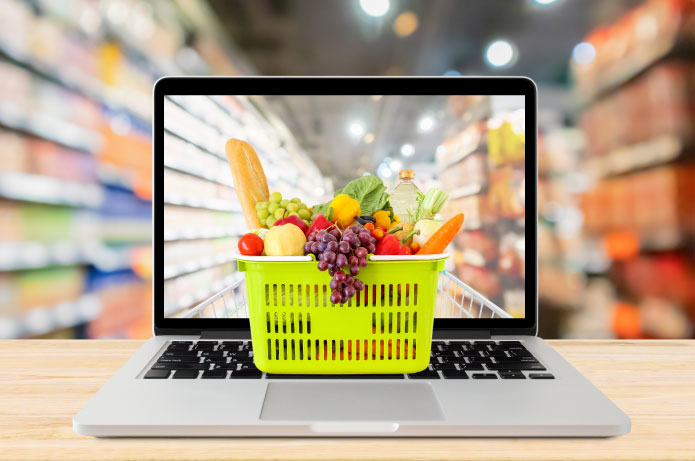Nos últimos anos, o comércio virtual de alimentos tem se expandido significativamente no Brasil. De acordo com a Brazilian Association of Electronic Commerce (ABComm), as transações online desse setor cresceram 42% entre 2022 e 2024.
Esse avanço reflete uma transformação no comportamento dos consumidores, impulsionada principalmente pela pandemia da Covid-19, que acelerou a digitalização do varejo.
Diante desse contexto, muitos empreendedores do ramo alimentício estão apostando no digital para expandir suas operações e atingir um público mais amplo. Mas quais são os passos iniciais para estruturar um e-commerce de alimentos em 2025?
Estruturando o negócio: primeiros passos essenciais
Para iniciar um e-commerce no segmento de alimentos, é indispensável um planejamento detalhado. Diferente de outras áreas, esse setor demanda atenção especial com a logística, armazenagem e conformidade com as normas sanitárias.
O primeiro passo é definir o modelo de atuação: será um comércio de produtos secos, perecíveis, orgânicos ou congelados? Cada tipo possui exigências específicas, desde o transporte até as condições ideais de conservação.
Outro aspecto fundamental é obter as devidas autorizações sanitárias. No Brasil, a comercialização de alimentos pela internet é regulamentada pela Agência Nacional de Vigilância Sanitária (Anvisa) e deve seguir as diretrizes do Código de Defesa do Consumidor.
Além disso, a Lei do E-commerce (Decreto 7.962/2013) estabelece regras sobre transparência, política de trocas e informações claras para os clientes.
Criar um site próprio ou vender via marketplace?
Uma das primeiras decisões para quem deseja ingressar no comércio eletrônico de alimentos é escolher entre desenvolver uma loja virtual exclusiva ou utilizar marketplaces. Ter um site próprio garante maior controle sobre a identidade da marca, a experiência do usuário e a precificação.
No entanto, plataformas consolidadas como iFood e Mercado Livre já possuem um público estabelecido e podem agilizar as primeiras vendas.
Se a escolha for por um site próprio, é essencial investir em uma plataforma segura e responsiva. Funcionalidades como integração com meios de pagamento, adaptação para dispositivos móveis e uma navegação intuitiva contribuem para uma experiência de compra positiva.
Como divulgar o e-commerce e atrair clientes
A promoção do negócio é um dos pilares do sucesso de um e-commerce. Estratégias como anúncios pagos, marketing de conteúdo e redes sociais ajudam a conquistar consumidores e fortalecer a presença da marca. Além disso, parcerias com influenciadores e programas de fidelização podem aumentar o engajamento e incentivar compras recorrentes.
Outra ferramenta indispensável é o SEO (Search Engine Optimization). Aplicar palavras-chave estratégicas, criar descrições detalhadas dos produtos e investir em blogs sobre alimentação saudável são formas eficazes de melhorar o posicionamento da loja nos mecanismos de busca.
Logística e entrega: desafios e soluções para o setor alimentício
A distribuição de alimentos exige um planejamento eficiente. Produtos perecíveis, por exemplo, necessitam de transporte refrigerado e entregas ágeis. Pequenos e médios negócios podem recorrer a parcerias com empresas de logística especializadas ou a aplicativos de delivery para otimizar a operação.
Fernanda Abdala, gerente de e-commerce da Banca do Ramon, comenta sobre as adaptações necessárias para garantir entregas de qualidade: “trabalhamos com produtos de alto padrão e sempre analisamos as soluções logísticas que proporcionam ao cliente uma experiência semelhante à compra presencial. Seja para vinhos e champanhes, ou alimentos como bacalhau e embutidos, tudo precisa manter a qualidade e chegar com agilidade.”
Outra tendência em ascensão é o modelo de “dark store” – pequenos centros de distribuição focados exclusivamente no comércio digital. Essa estratégia tem sido adotada por empreendedores que buscam reduzir o tempo de entrega e assegurar um serviço eficiente.
O que esperar do mercado de e-commerce de alimentos nos próximos anos?
O crescimento das compras digitais deve continuar se intensificando, impulsionado pela conveniência e pela ampla variedade de produtos disponíveis online. Para os empresários do setor alimentício, investir em tecnologia, logística otimizada e ações de marketing digital será essencial para se destacar na concorrência.
Acompanhar as tendências e compreender as preferências do consumidor são fatores determinantes para o sucesso no comércio eletrônico de alimentos. O futuro das vendas online promete inúmeras oportunidades para negócios de todos os portes que souberem inovar e atender às novas demandas do público moderno.


